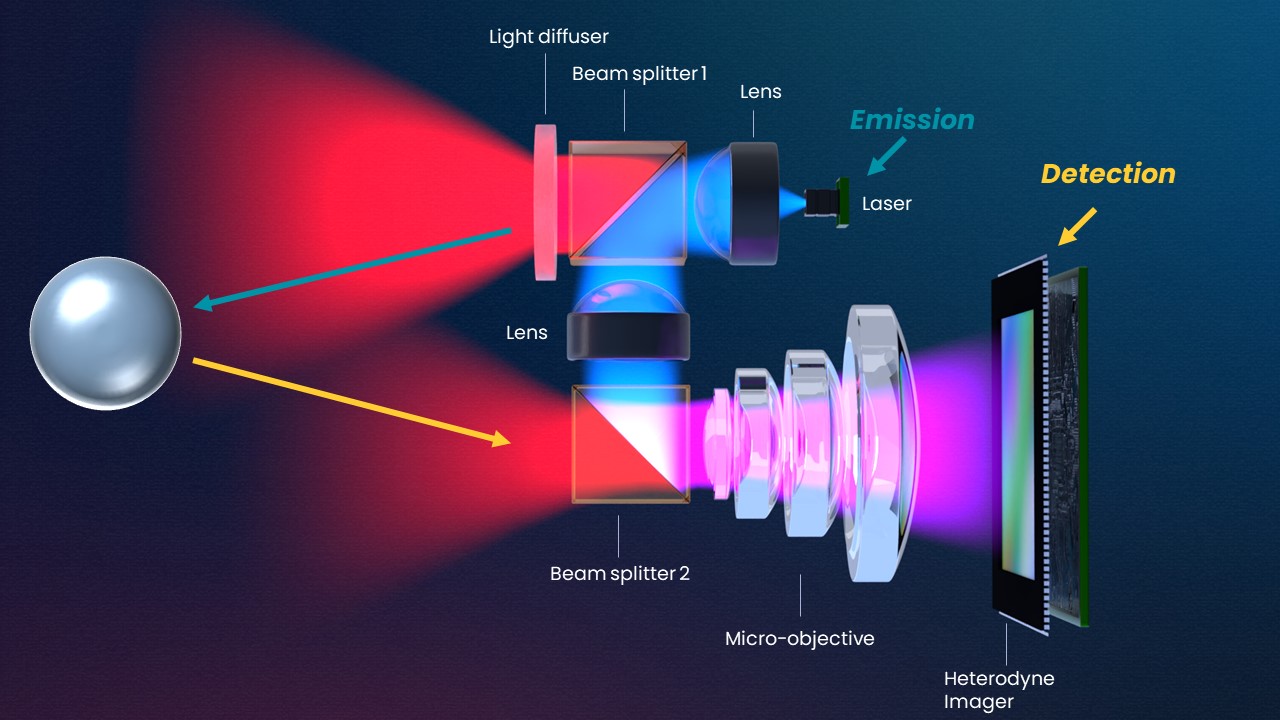FMCW-Flash3D
Map speed and depth in a scene instantaneously with precision, in all lighting conditions
3D frequency-modulated continuous-wave flash imaging utilizes a frequency-modulated laser beam separated into two parts, one to illuminate the entire scene to be measured, and a reference beam. The beams are recombined, and the interference is measured by a photodetector, providing the distance and speed of all the points in the scene illuminated. A 3D image can be captured even in bright sunlight.
Today’s commercial depth mapping solutions—like the face recognition systems in our smartphones—use time-of-flight or structured-light imaging, both of which require lasers to illuminate the scene. The downsides are sensitivity to harsh lighting and an inability to measure the instantaneous speed of moving objects at video frame rates. CEA-Leti’s 3D FMCW imager solves these problems.
What it can do
CEA-Leti’s 3D FMCW imager is a compact, low-cost, high-performance solution that offers decisive advantages for a number of applications:
- Virtual and augmented reality systems
- Autonomous vehicles
- Robotics
- Face recognition
- Machine vision
- Autofocus for photography and videoconferencing
|
What makes it unique
Unlike FMCW with beam steering, 3D FMCW does not require scanning (it captures an entire scene instantaneously in flash mode) and can measure both distance and speed at video frame rates with high resolution. And, unlike ToF and structured-light imaging, it works in bright light, eliminates the eye-damage hazards of laser-based systems, and is low-power. This is the first 3D FMCW imager and optical system to fit into a package as small as 1 cm—compact enough for integration into smartphones and a wide range of other devices.
|

:
Split view of FMCW-FLASH3D optical system and image sensor
What’s next
A second-generation of the 3D FMCW imager with a more tightly integrated optical system is under development and will be scaled up on CEA-Leti platforms. This next generation will result in a more compact, higher-performance device. CEA-Leti’s expertise in 3D packaging will be instrumental to this research.
Ultimately, the technology will be extended to SWIR long-range imaging, which could enable new applications like air-to-ground measurement. CEA-Leti is leveraging its historic excellence in heterogeneous materials and advanced substrate engineering to make this new technology a reality in the medium term.
Publications
Main publications:
- Frey, L., & Daami, A. (2021). Three-dimensional FMCW scanless imaging: Optical challenges and solutions. In Proceedings of SPIE, 11693, art. No. 116930P.
- Daami, A. & Frey, L. (2021). Free space 3D FMCW imaging system: Towards consumer application. In Proceedings of SPIE, 11693, art. No. 116930O.
|